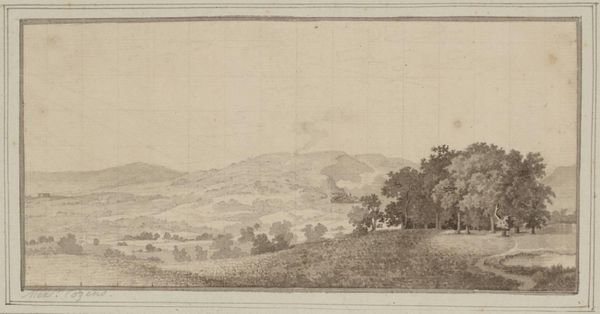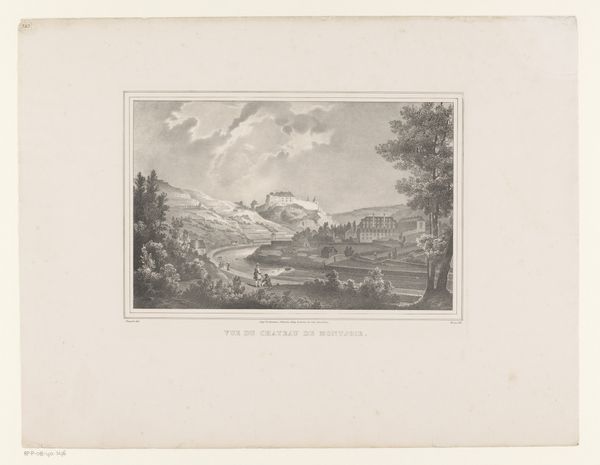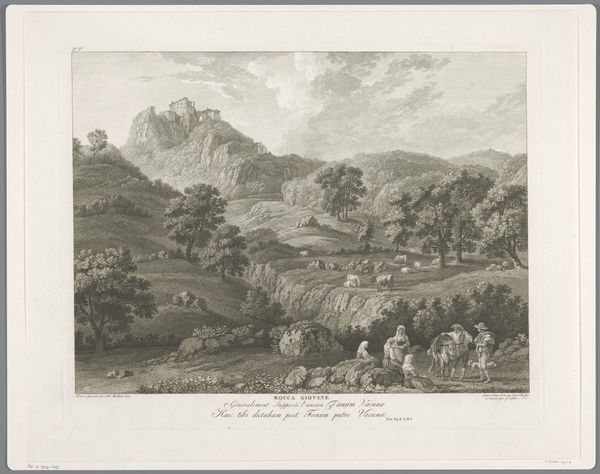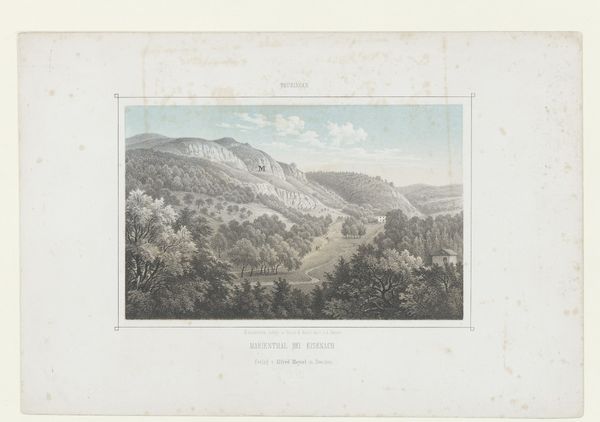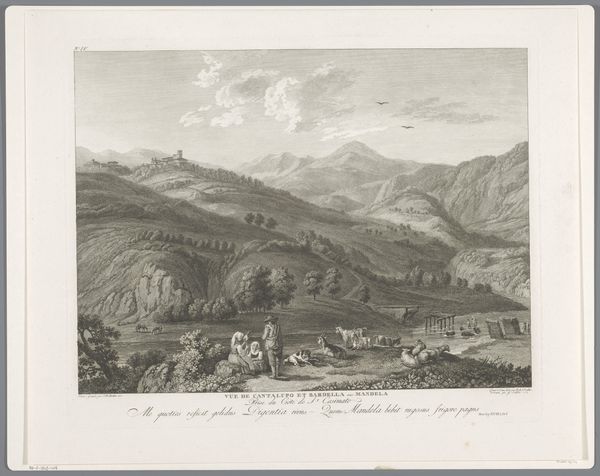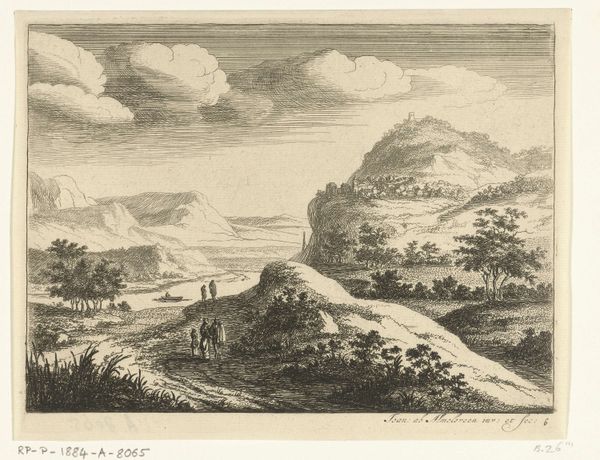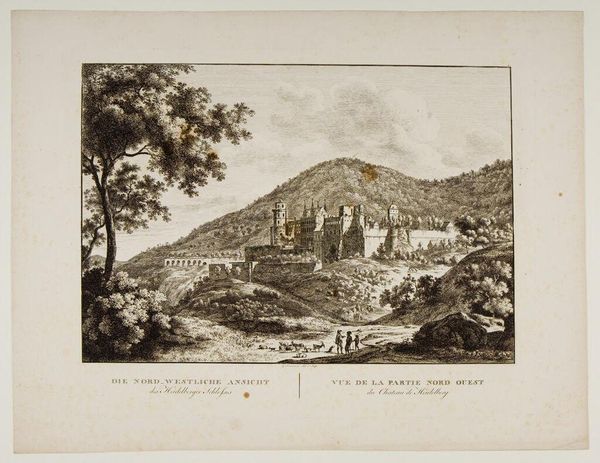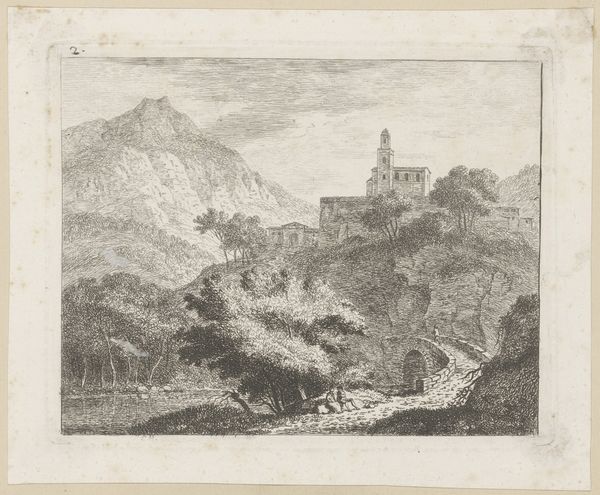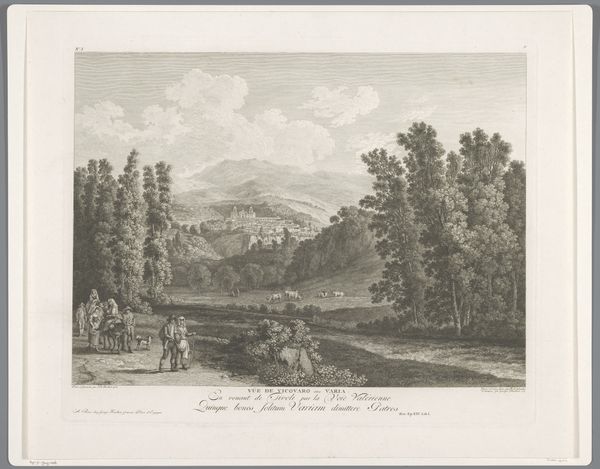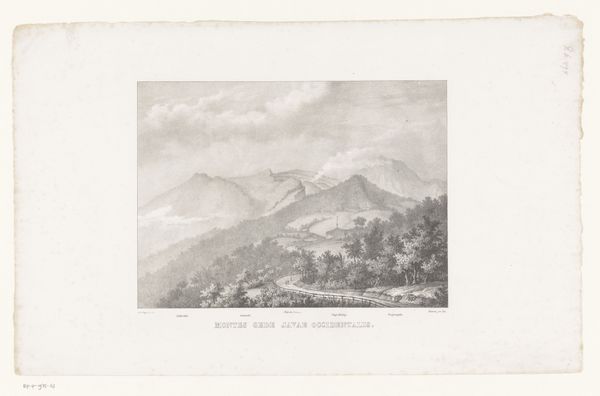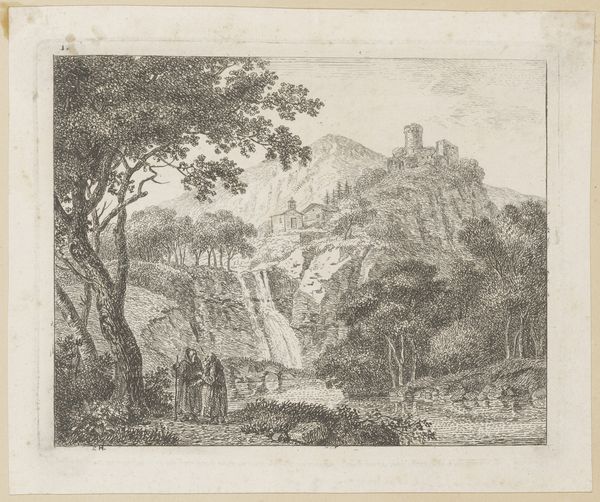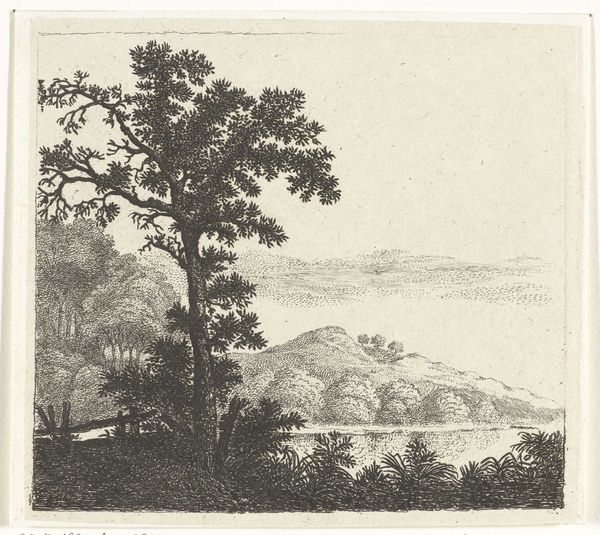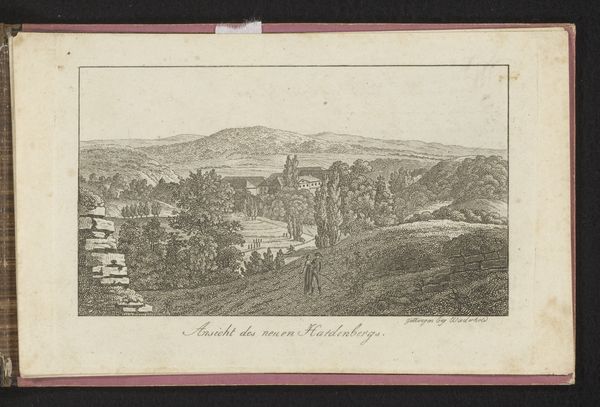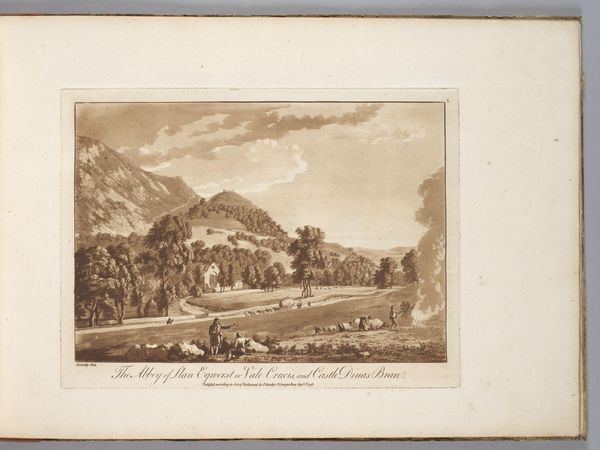
View Taken in the Region of Subiaco, from Views of Italy 1818
0:00
0:00
drawing, lithograph, print, paper, engraving
#
drawing
#
lithograph
# print
#
landscape
#
paper
#
romanticism
#
engraving
Dimensions: 199 × 293 mm (image); 252 × 339 mm (sheet)
Copyright: Public Domain
Editor: This is "View Taken in the Region of Subiaco," a lithograph, engraving, and drawing print on paper from 1818, made by Constant Bourgeois. The delicate linework and shading create a real sense of depth. I find myself drawn to the way the distant buildings sit perched atop the hill, but also very focused on the dense trees. What elements of composition and texture strike you most powerfully? Curator: The piece demonstrates an interesting tension between linear precision and atmospheric diffusion. The lithographic technique employed allows for subtle tonal gradations in the sky and distant mountains, creating a sense of aerial perspective. Note, however, the sharp, almost graphic quality of the trees in the foreground, achieved through engraving and drawing. How do these contrasting techniques contribute to the overall visual experience, in your view? Editor: I see what you mean about the tension. It’s almost as if there are two different levels of reality presented. The buildings and trees feel both near and impossibly far, real, but maybe idealized as well. So it sounds like the techniques work together to accomplish a purpose? Curator: Precisely. The formal interplay of these techniques results in a work that both represents and interprets the landscape. Consider, too, the careful arrangement of forms, guiding the viewer's eye from the detailed foreground elements to the more simplified forms in the background. The strategic distribution of light and shadow also contributes to the overall coherence and visual impact. Do you see how each part contributes to the feeling that you mention earlier? Editor: Yes, absolutely. I hadn’t thought so explicitly about the techniques used, but now the artistic intention seems much clearer. It all makes much more sense when considered together. Curator: Indeed, a formalist approach invites us to attend to the intrinsic elements of a work. Attending to those internal qualities of an artwork offers another pathway for art appreciation.
Comments
No comments
Be the first to comment and join the conversation on the ultimate creative platform.
